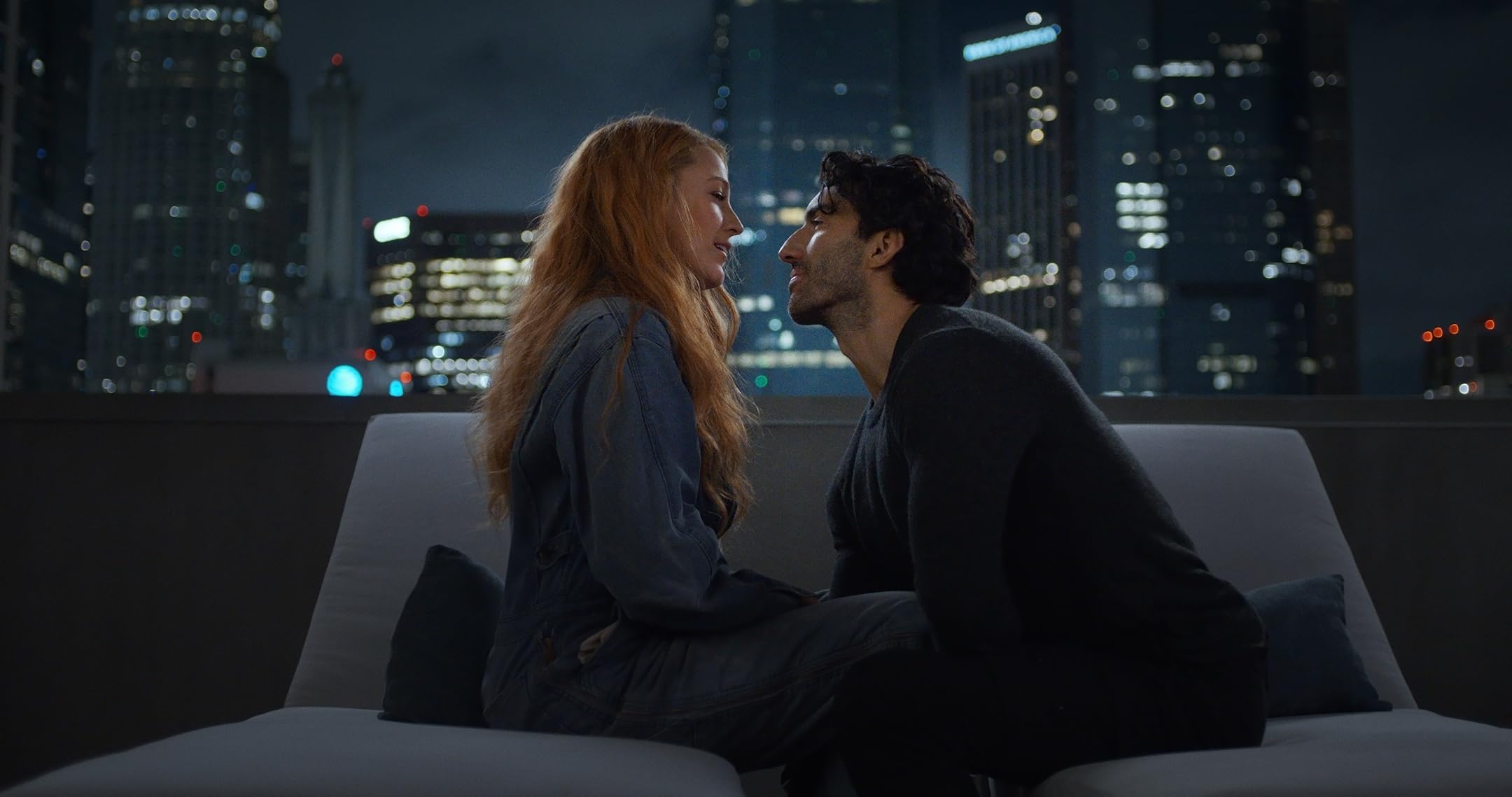‘It Ends with Us’: A Glossy Mirage of Depth

Writer Joseph J. Airdo // Phoenix Film Critics Society
Justin Baldoni’s highly anticipated adaptation of Colleen Hoover’s best-selling novel “It Ends With Us” arrives in theaters with considerable fanfare but ultimately falls short of its lofty ambitions. The film, while visually captivating, grapples with complex themes in a manner that often feels oversimplified and heavy-handed, resulting in a viewing experience that’s as frustrating as it is glossy.
Blake Lively stars as Lily Bloom, a young woman who moves to Boston to escape her troubled past and pursue her dream of opening a flower shop. A chance encounter with the charming neurosurgeon Ryle Kincaid (Justin Baldoni) sparks an intense romance that quickly becomes the center of Lily’s new life. However, as their relationship deepens, Lily begins to see troubling signs that echo her childhood trauma. The situation is further complicated when Atlas Corrigan (Brandon Sklenar), Lily’s first love, unexpectedly re-enters her life, forcing her to confront her past and make difficult decisions about her future.
The film’s greatest strength lies undeniably in its visual appeal. Cinematographer Polly Morgan captures Boston’s urban landscape with a romantic, dreamy quality that perfectly complements the characters’ stylish wardrobes and the film’s overall aesthetic. The lush, Instagram-worthy visuals provide a stark contrast to the darker themes lurking beneath the surface, creating an intriguing visual dichotomy that the narrative, unfortunately, fails to fully capitalize on.
At its core, “It Ends with Us” attempts to tackle the weighty subjects of domestic abuse and generational trauma. However, the execution often feels more akin to a public service announcement than a nuanced exploration of these complex issues. The movie’s portrayal of its characters lacks the depth and ambiguity that such sensitive topics demand, instead opting for a black-and-white narrative that may alienate more discerning viewers.
Baldoni’s performance as Ryle stands out as one of the film’s highlights. He skillfully balances the character’s charm and vulnerability with his darker impulses, creating a multidimensional portrayal that hints at the complexity the rest of the film lacks. However, Lively’s portrayal of Lily is less convincing. Her character’s actions often seem at odds with the film’s attempt to present her as an unambiguous victim, resulting in a performance that at times feels disjointed and unsympathetic. This is particularly evident in key scenes where Lily’s reactions come across as incongruous or even manipulative, undermining the audience’s ability to fully empathize with her plight.
The supporting cast, including Brandon Sklenar as Atlas and Jenny Slate as Lily’s friend Allysa, do their best with the material they’re given, but their characters often feel underdeveloped and serve more as plot devices than fully realized individuals.
The pacing of “It Ends With Us” is notably uneven, with the 130-minute runtime feeling simultaneously too long and too short. While some scenes linger unnecessarily, others crucial to character development are glossed over or omitted entirely. This inconsistency disrupts the narrative flow and undermines the emotional impact of key moments. The film’s structure, punctuated by several time jumps, further contributes to this sense of disjointedness, leaving viewers struggling to connect with the characters’ emotional journeys.
Perhaps most problematically, the film’s handling of domestic violence scenes — often portrayed through quick cuts and flashes — inadvertently minimizes their impact. This approach, while possibly intended to avoid gratuitous depictions, instead leaves the audience with more questions than answers. It’s a delicate balance to strike, but the film errs too far on the side of caution, resulting in a portrayal that feels sanitized and fails to convey the true gravity of the situation.
The movie also struggles with its portrayal of the cyclical nature of abuse and trauma. While it attempts to show how past experiences shape current behaviors, it often resorts to oversimplification. The characters of Ryle, Lily and Atlas are presented in broad strokes that fail to capture the nuanced reality of how individuals can be both victims and perpetrators in their own right. This lack of complexity does a disservice to the serious themes the film aims to explore.
“It Ends With Us” seems tailored for a specific audience — primarily women who connect with the themes of trauma and resilience. However, in its eagerness to deliver a clear message, the film oversimplifies the complexities of abusive relationships and the long-lasting effects of childhood trauma. This approach may resonate with some viewers but risks alienating others who are looking for a more thoughtful examination of these issues.
The film’s score, while competent, often feels heavy-handed, telegraphing emotional beats rather than enhancing them organically. This, combined with the sometimes clunky dialogue, further detracts from the film’s attempts at emotional authenticity.
In the end, “It Ends with Us” is a visually appealing but deeply flawed adaptation that struggles to do justice to its source material and subject matter. While it may resonate with fans of the novel or those seeking a straightforward romantic drama with a message, viewers looking for a more nuanced exploration of its themes are likely to leave the theater unsatisfied.
The film’s title promises a resolution, an ending to a cycle of abuse. However, in its execution, it fails to provide the depth and complexity needed to truly grapple with such a weighty promise. Instead, it offers a simplified, almost fairy tale-like conclusion that feels at odds with the real-world issues it attempts to address.
“It Ends with Us” had the potential to be a powerful exploration of love, trauma and resilience. Instead, it settles for being a visually stunning but ultimately shallow examination of these crucial themes. While it may find an audience among those looking for a glossy romantic drama with a message, more discerning viewers are likely to find themselves frustrated by its missed opportunities and oversimplification.




